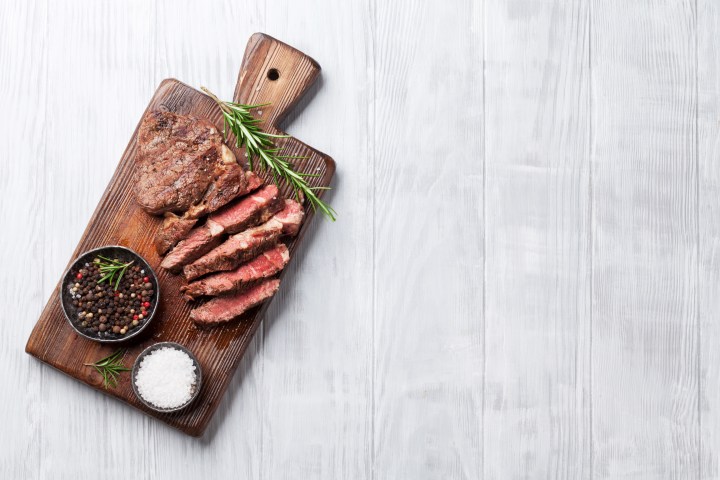The ketogenic diet, known for its low-carb, high-fat approach, has been growing in popularity. And, while it’s important to focus on maintaining the right macronutrient ratios when it comes to this dietary approach, it’s equally essential to prioritize nutrient-dense food options. This article explores some of the healthiest foods you can eat on a keto diet to ensure that your body gets all the vitamins, minerals, and antioxidants it needs to thrive.
RELATED: Must-Have Low-Carb Pantry Items For Anyone Just Starting The Keto Diet
10 Healthy Foods to Eat on a Keto Diet
#1 Leafy Greens

Leafy greens, such as spinach, kale, and Swiss chard, are low in carbohydrates and packed with essential nutrients like vitamins A, C, and K, as well as minerals like iron, potassium, and magnesium. Include a variety of these greens in your keto meal plan to ensure a well-rounded nutrient profile.
#2 Avocado

This creamy fruit is a keto superstar, boasting healthy monounsaturated fats, fiber, and a wealth of vitamins and minerals. Avocado can be enjoyed in various ways, including in smoothies, salads, or as a stand-alone snack with a sprinkle of salt and pepper.
RELATED: 7 Reasons to Add Avocado to Your Diet
#3 Salmon and Fatty Fish

Rich in omega-3 fatty acids, fatty fish like salmon, mackerel, and sardines are excellent choices for a keto diet. These heart-healthy fats have been shown to reduce inflammation and make an excellent addition to a healthy keto diet. Plus, fatty fish are great sources of high-quality protein and essential nutrients like vitamin D and selenium.
#4 Nuts and Seeds

Nuts and seeds are fantastic sources of healthy fats, fiber, and protein, making them perfect for the ketogenic diet. Some of the best options include almonds, walnuts, chia seeds, and flaxseeds. They can be enjoyed as snacks, added to yogurt or salads, or used to make keto-friendly nut butter or milk.
#5 Olive Oil

Extra virgin olive oil is rich in monounsaturated fats and antioxidants, making it an ideal choice for a keto diet. Incorporate it into your meals by using it for cooking, drizzling over salads, or adding it to homemade dressings and sauces.
RELATED: Which Type of Olive Oil is Actually Best?
#6 Grass-Fed Meat and Poultry

When choosing meat and poultry on a keto diet, opt for grass-fed and pasture-raised options. These sources tend to be higher in beneficial omega-3 fatty acids and have a better nutrient profile than their grain-fed counterparts.
#7 Eggs

Eggs are versatile, nutrient-dense, and an excellent source of high-quality protein. They provide essential vitamins and minerals like choline, vitamin D, and selenium. Enjoy them boiled, scrambled, or poached for a delicious and healthy keto meal.
#8 Low-Carb Vegetables

Non-starchy vegetables like broccoli, cauliflower, zucchini, and bell peppers are low in carbs but high in fiber and essential nutrients. They are great for adding volume and variety to your meals without increasing your carb intake significantly.
#9 Full-Fat Dairy

Full-fat dairy products such as Greek yogurt, cottage cheese, and aged cheeses can be part of a healthy keto diet. They are rich sources of calcium, protein, and healthy fats. Be sure to choose unsweetened options.
#10 Berries

While most fruits are high in carbs, berries like raspberries, blackberries, and strawberries can be enjoyed in moderation on a keto diet. They are packed with antioxidants, fiber, and essential vitamins, making them a nutritious and delicious choice.
Optimize Your Keto Diet With Nutrient-Rich Foods For Maximum Health Benefits
By incorporating a variety of leafy greens, healthy fats, high-quality proteins, and low-carb vegetables, you can ensure that your body gets all the essential vitamins, minerals, and antioxidants it needs. Remember, the key to a successful and healthy keto diet is not just focusing on your macronutrient ratios, but also prioritizing the quality of the foods you consume.


